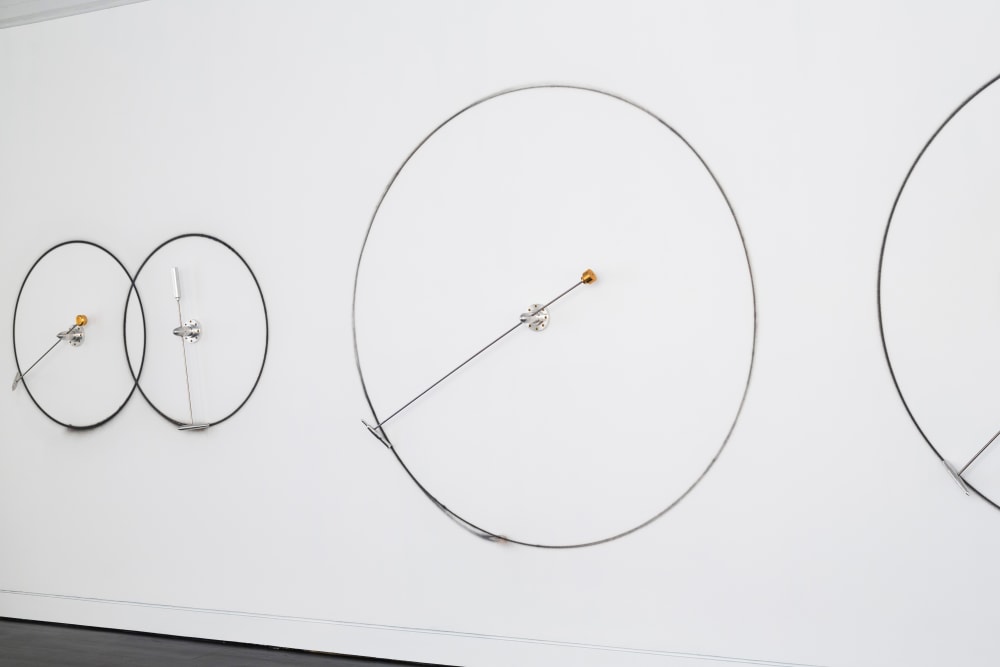
During my cab ride over to Hemphill Fine Arts to see Marley Dawson’s exhibit “Statics and Dynamics,” I heard an NPR report about a new atomic clock that’s “so precise that it would neither lose nor gain one second in about 5 billion years of continuous operation.” Even more incredibly, this clock may be just a predecessor to one that keeps accurate time for 50 billion years.
The fact that the 5-billion-year clock has been invented—and is doomed to obsolescence—makes it easy to see why Dawson, an Australian, seems so drawn to old-fashioned machines that are crafted by hand and designed to be experienced, even doted on, by the user.
Dawson has long been fascinated with machinery, as seen in his previous exhibit at Hillyer Art Space, in which he rigged a vintage moped to revolve around a center post, tracing a circular smudge. Some of Dawson’s works at Hemphill follow this model, with the intensity cranked up: The exhibit features a collection of machined, wall-mounted contraptions built to channel a lit rocket fuse so that it inscribes a circular, black pattern into the wall. I didn’t see the works while the fuse was lit—such performances are over in a literal flash—but even when resting, they thoughtfully probe numerous dichotomies.
Dawson’s “Circle Works” pair mechanized movement with a resulting line that looks imperfect enough to be human-drawn. The works constrain an unpredictable burst of energy within a harness of cool, steel-and-aluminum hardware, and they revel in the tactile business of creating technology by hand.
If those pieces verge on industrial-age porn, some of his other work on view—stylized soapbox derby race cars carved from birch wood—plunge right into it. Worship of the classic automobile’s sexy lines is so common in art as to be cliché. Dawson’s birch racers don’t add all that much to the genre. With one exception.
Dawson’s “08. Untitled” shows on a flatscreen, which loops a low-definition video rendered in shadowy black and white with the soft, rhythmic, almost peaceful feel of a sonogram. The footage shows a vehicle shaped like one of the birch racers, this one mounted on a screw, surrounded by ethereal bubbles that trace an aerodynamic arc around the car, as if the car is being tested in a wind tunnel.
The video is mysterious, with a secret only explained once the viewer passes through a small room of etchings by Martin Puryear and happens upon an inconspicuous nook. On the wall there is a small box containing mineral oil, a miniature racecar, and a device that creates bubbles. The video is a live feed of this little tableau, rotated 90 degrees.
The piece works equally well as an initial enigma and its subsequent explication—but this fascinating work is made possible by digital technology that you can’t trace dotingly with your fingertips, or drive into controlled chaos with a burning rocket.